

|
Ricardo C. Galvan |
Spring 2002 |
|
History 1302 |
Hines |
"Friendly as a Texas Smile"

Just north and a little east of Austin, 27 miles down highway 79 in Southwest Williamson County lies the little town of Taylor, Texas.
Formerly known as Taylorsville, Taylor was founded on August 9, 1876 and named in memory of Edward Moses Taylor the original official of the Houston Belt and Terminal Railroad in 1876 when the town was laid out. The name was changed to Taylor in 1892, but the United States Post Office didn’t recognize the name change for several years.
 Taylor grew fast. In 1877 the first Cotton gin in
Taylor was built and the rich black soil and skill work migrating into the town
earned Taylor the reputation of “the largest inland cotton market in Texas”
(Mantor 7). Boasts about the town were heard across the nation, “Taylorsville,
attracted men of means and morality and intelligence” (Mantor 7). In the
prosperity brought to Taylor, the wealth of cotton opened the eyes of its 500
prospective inhabitants and the following year population grew to a thousand
and construction began on a grain elevator and the Taylor stock yards served as
a shipping point for cattle and sheep all over the area. But with the fast
paced industrialization came unspeakable risks. Unprepared farmers investing in
the immense gins that seemed to spring up all over Taylor, but they brought
engulfing fires that took days to put out. “Back then we weren’t as prepared
fireman as we are today. We do get the hand-me-down equipment of the bigger
cities like Austin, Dallas and San Antonio but we made good with what we have. Sometimes
a rock would get loaded into the gin with the cotton, and when the mechanical
arms began to move sparks would form, igniting the dry cotton and spreading to
the dusty floors. We arrive on the scene and have to duck from the back draft.
When you would finally get a glimpse inside you would see the wall after wall
of flames coming toward you” (Hernandez
5). But “like the Phoenix, Taylor rose from the ashes” (Mantor 7) of fires time
and time again from the gin fires to the horrible main street fire that leveled
almost every building.
Taylor grew fast. In 1877 the first Cotton gin in
Taylor was built and the rich black soil and skill work migrating into the town
earned Taylor the reputation of “the largest inland cotton market in Texas”
(Mantor 7). Boasts about the town were heard across the nation, “Taylorsville,
attracted men of means and morality and intelligence” (Mantor 7). In the
prosperity brought to Taylor, the wealth of cotton opened the eyes of its 500
prospective inhabitants and the following year population grew to a thousand
and construction began on a grain elevator and the Taylor stock yards served as
a shipping point for cattle and sheep all over the area. But with the fast
paced industrialization came unspeakable risks. Unprepared farmers investing in
the immense gins that seemed to spring up all over Taylor, but they brought
engulfing fires that took days to put out. “Back then we weren’t as prepared
fireman as we are today. We do get the hand-me-down equipment of the bigger
cities like Austin, Dallas and San Antonio but we made good with what we have. Sometimes
a rock would get loaded into the gin with the cotton, and when the mechanical
arms began to move sparks would form, igniting the dry cotton and spreading to
the dusty floors. We arrive on the scene and have to duck from the back draft.
When you would finally get a glimpse inside you would see the wall after wall
of flames coming toward you” (Hernandez
5). But “like the Phoenix, Taylor rose from the ashes” (Mantor 7) of fires time
and time again from the gin fires to the horrible main street fire that leveled
almost every building.
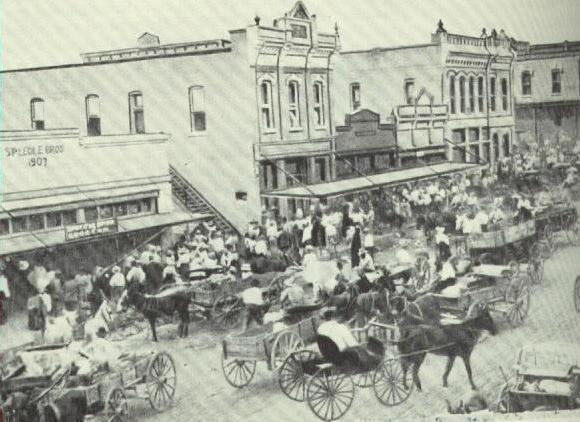
The growing town began to demand a way to quench the growing interests of its people. So attention was diverted to anything that was remotely entertaining, namely Taylorsville’s annual sheep shearing gatherings. Long before Taylor was founded nearby sheep men congregated in order to shear their sheep. Games and contests were created in order to pass the time of the several day event, public interest grew, and in 1880 the Taylor fair Association was formed. And in 1883 the landmark, First National Bank of Taylor (which was also the first First National Bank of Williamson County) was assembled.
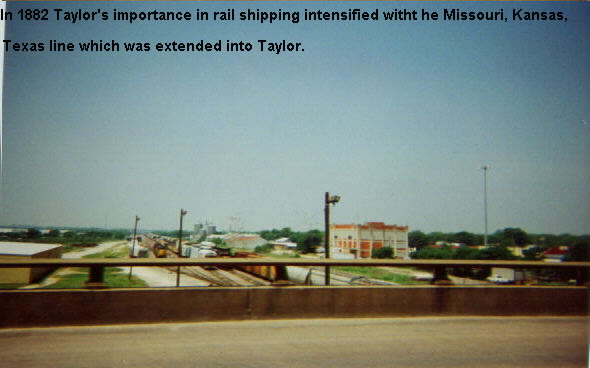
In 1876, the new national propaganda of the railroad and industrialization spread across the plains and hills of Texas. In 1882 Taylor’s importance in rail shipping intensified when the Missouri, Kansas, Texas line extended into Taylorsville creating a major port to harbor engineers, livestock holders, and equipment for the armed services. It was the railroad and the tracks were due to reach Taylor in June, so as to seize profit the Texas Land and Cattle Company bought the town site. The railroad wasn’t on time, but the prospective buyers were and the new town of Taylor came into being. Modern technology and better work for everyone lead everyone to believe that Taylor was the town of the future causing everyone to jump on the bandwagon for Taylor. “My family got to know Vicente Rodriguez, the super-intendent for the railroad. He asked my daddy to come to Taylor to work for him. The Galvan family stayed in Thorndale as daddy took the train to Taylor from 1 to 2 weeks at a time. The whole family rode free because dad worked for the railroad. At age eight we moved to Taylor, because it was easier then commuting to Taylor.” (Galvan 4)
Taylor has an elected City Council composed of five elected members derived from the four individual districts and one head position. The council members elect the Mayor and a Mayor Pro Tem. The Council has full authority over enacting legislation, adopting budgets, and determining policies, subject only to the limits set by state constitution and City Charter. And being as how Taylor is a home rule city all of this is possible.
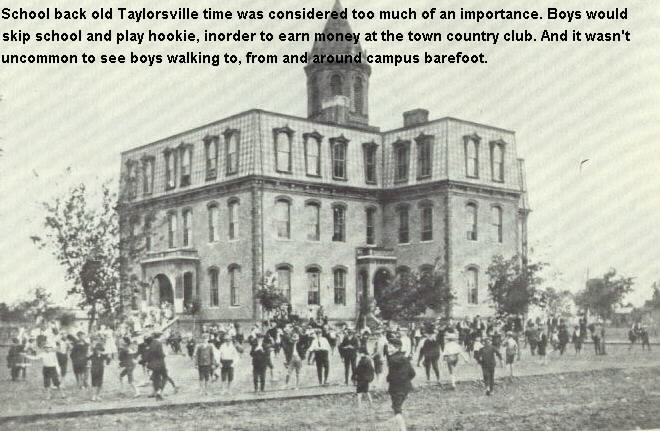
The last
recorded census taken in 1994, sets the population at approximately 12,434 and
the family count at approximately as 4,727 (recorded in 1990). Taylor is part
of the Austin-San Marcos metro area and benefits greatly from the incoming
tourists from the surrounding cities due to concerts, rodeos, conventions and
other tourist voyages passing through from east Texas, Arkansas, and Louisiana
along with the rest of the country. “You could always find work in Taylor, I
used to cut out of school early hitchhike with some friends up to Taylor and
come back home with a couple hundred. Business wasn’t that good, but Taylor
didn’t have gangs, street violence, or even a crime problem so there was always
ways to make money” (Galvan 6) It wasn’t uncommon to find the
adolescents ditching class in order to make money at the nearby country club
either, “An old friend, Babe Martin used to go play hookie and go up to the new
country club owned by the Connelly’s para los gabachos and work as a caddy for
a dime! I know you think it sounds funny, but a dime would buy you a hamburger,
soda water, and candy back then” (Galvan 4)
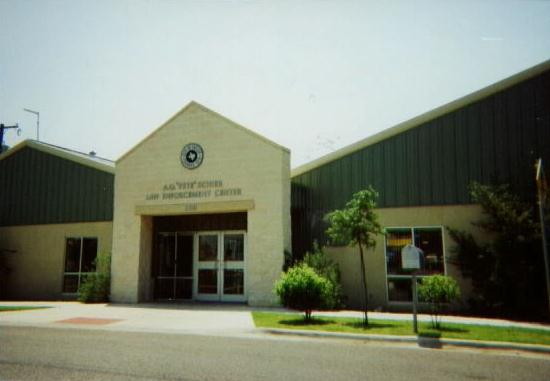
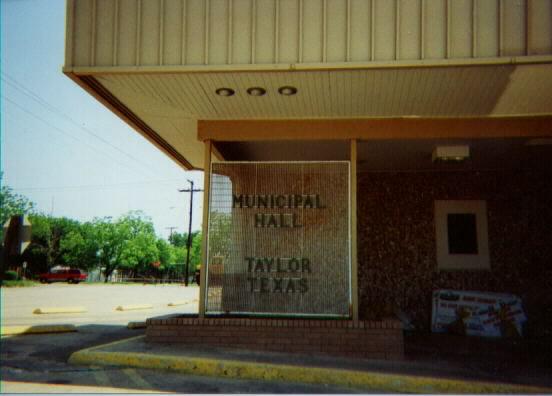

Though quite small (ranging about 27.87 sq kilometers of land area), Taylor compensates with its great homely, down-to-earth atmosphere, sole country club, quaint restaurants, and vast cotton gins that peer over the horizon (some that have long been closed down). “Taylor was prosperous, filled with people like a mall in Austin. I know the girls were prettier then. People came because of all the fieldwork and the railroads. Back then everyone was making money. Back then Taylor was know as Taylorville and we had five up and running cotton gins” (Hernandez). The rustic buildings erected after the tragic fire in 1879 display the history of Taylor and the attempt at the town’s preservation from the cast iron staircase supports, granite building corner protectors and stained glass and stone. Even the old cinema that seems to be frozen in a great retro design of the fifties has brought great prosperity to Taylor with its theatre/ candy shop and with the promotion of the owner’s invention of a sauerkraut-flavored candy (that had a brief lifespan within the town).
Taylor has had several rises and falls in prosperity because of its cattle and cotton industries. The town also takes part in the preservation by many of the wealthier citizens of Taylor, Texas as they buy out the old red sandstone bank, general store, even the large golf course of the country club. Now in the new millennium, Taylor prides itself in its uplift from those periods of time and boasts of its icons that have aided in the progression such as Governor Dan Moody. Dan Moody is credited with the prosecution of the KKK in Williamson County and bringing back of justice to the small town from corrupt ma and pa operations such as the Fergusons and was the stepping stone out of the Burlesque era that clouded over Taylorsville. “In 1996 the town of Taylor wanted to build an airport in cotton field area, but farmers didn’t want to sell. Those farmers were crazy not to sell their land. They could of have sold their land for $500 an acre. And in the long run they could’ve taken that as investments in the bank, but they wanted to be farmers. (Galvan 4)
Women had great roles in Taylor social activity as well. Yearbooks of the Sesame Circle, the progenitor of women’s study clubs with the motto, “let our reach exceed our grasp.” This association started the first lending library and hosted the state’s first convention of the Texas Federation of Women’s Clubs.
...But with every town and city there does come an under belly. Taylor’s First National Bank was rumored to be owned by the Klu Klux Klan to insure prosperity for a select few. A great deal of racial tension and segregation continued in Taylor up until the early eighties, I remember when I took my first wife Yolanda to Taylor to show her where I grew up. It was around 1973 when I went down there. We stepped into a restaurant called El Caracol, I think, well we sat down and flagged down a waitress, a Mexicana, and ordered. We waited and waited, other people came into the restaurant, sat down, ordered and received their meal and we were still waiting so I flagged down the same waitress again and asked what was going on and she explained to me that we weren’t supposed be in their and that the owner instructed her not serve us so that we would eventually get the hint and leave (Galvan 6). Separate juke boxes were used for the different minority groups as well as restrooms, and restaurants, “Mexicanos had to go to designated restaurants, but if you looked gabacho you could enter the white restaurants, but as soon as you spoke Spanish you were kicked out” (Hernandez 5)
CONNECTIONS TO COURSE THEMES:
There are major connections to the course studies of this semester in U.S. History 1302. Upon interviewing the residents I began to recall a great deal of facts from my text and lectures. This little town had it all from industrial boom migration, to migrant farm working strife, to Klu Klux Klan secrets and hidden stories.
INTERVIEWS:
“Taylor, even at one point, was known as Red Taylor because of the seedy events that began to happen in the late 60’s through the 70’s. Taylor was a small town and had to conform to the times. All these soldiers would get off on weekend leave and come to drink in Taylor, girls from Austin, San Antonio, and the Valley would come up and sell themselves to the soldiers in order to raise money for college. Churches were being converted into more bars and the streets were so pack it looked like Bourbon Street on Mardi gras”
2) Arthur R. Hernandez
“A lot has changed, the old drug store is now a Puerto Rican cantina. Even one the old Churches is now a cantina.”
“Once, there were these Hispanic two soldiers back in the 40’s who was murdered by the police, it was a big secret but now everyone knows. You see the soldiers were better equipped and trained and so made fools of the police officers when they tried to take them in for public intoxication. When the soldiers had their fun and returned the guns to the officers out side the bar the officer shot them in the back”
3) Baldamar C. Galvan Jr.
I remember when I took my first wife Yolanda to Taylor to show her where I grew up. It was around 1973 when I went down there. We stepped into a restaurant called El Caracol, I think, well; we sat down and flagged down a waitress, a Mexicana, and ordered. We waited and waited, other people came into the restaurant, sat down, ordered and received their meal and we were still waiting so I flagged down the same waitress again and asked what was going on and she explained to me that we weren’t supposed be in there and that the owner instructed her not serve us so that we would eventually get the hint and leave
PHOTOGRAPHS:
TIES TO THE COMMUNITY:
My parent’s families, both sides migrated from Spain to different parts of the country following the industrial boom until finally settling in Taylor. When my father Baldamar Galvan and Susanna Galvan finally married they chose to leave Taylor for a more prosperous city, San Antonio, where they settled raising four generations of Galvans.
WEBSITES:
http://www.ohwy.com/tx/t/taylor.htm
http://www.pe.net/~rksnow/txcountytaylor.htm
http://www.texasescapes.com/TOWNS/Taylor/Taylor_Texas.htm
ANNOTATED BIBLIOGRAPHY:
1) Texas Cities. Home page. 23
Mar. 2000. Texas Cities Internet Cite. 23 Mar 2000.
http://www.ohwy.com/tx/t/taylor.htm
This source wasn’t as useful as I thought is was going to be but it did link me to the a few great sources that I really needed.
2) Key to the City. Home Page. 13 April 2001. Key to the City. 13 April 2001
http://www.pe.net/~rksnow/txcountytaylor.htm
This site helped me tremendously with its simple listing of facts and statistics, quick history, and other links.
3) Kate Wong Troesser. Home Page. 20 April 2002. Blue Prints
for Travel, LLC. 20 April 2002.
http://www.texasescapes.com/TOWNS/Taylor/Taylor_Texas.htm
4) Galvan, Baldamar. Personal interview. 26 Mar 2002.
This source is my father, who took me around Taylor showing me the sites and introducing me to more of the elders of the town, he was the reason I decided to research Taylor and found so much of the underlying truth in the town.
5) Hernandez, Arthur R. Personal interview. 26 Mar 2002.
Arthur was a great source in filling in the gaps of my father’s stories, and giving me some insight into the towns underlying truth he is my primary source of information. He was around when the town began to prosper and is now a city official and chief of Fire department.
6) Galvan Jr., Baldamar S. Personal Interview. 14 Apr 2002.
This is my brother and he gave me a less conservative view of Taylor. As he was growing up our parents used to send him up to Taylor to buckle down and so he saw the side of Taylor no one else wanted to see.
7) Mantor, Ruth. Our Town: Taylor. Mar 1983.
This source was the best reference I have because it didn’t try to glamorize anything, it just explained facts and gave great pictures.
Return to Small Town Research Projects Index